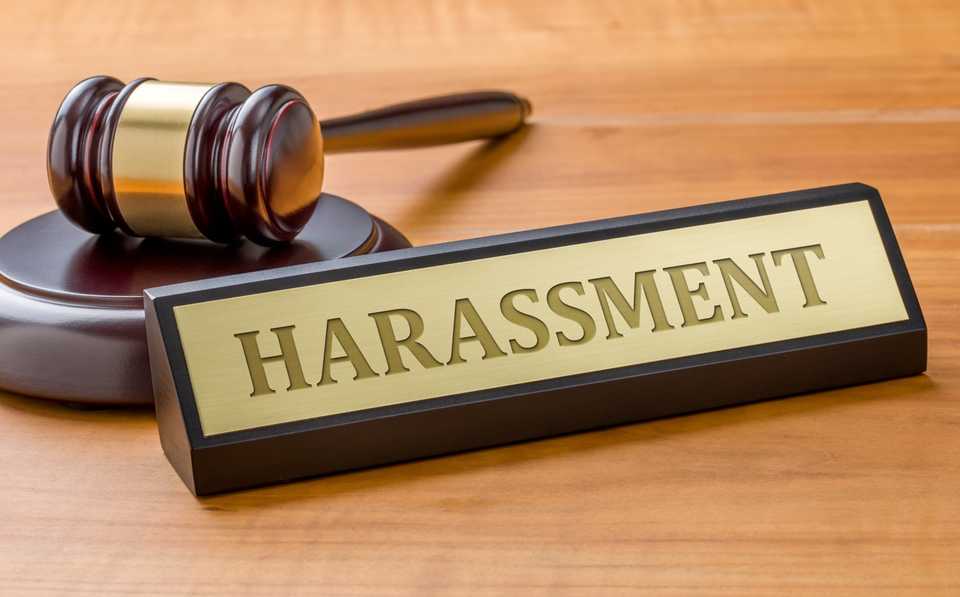In legal matters, protecting one's rights and interests often requires swift and decisive action.
Among the tools available for addressing disputes or stopping unlawful actions, a cease and desist letter holds significant importance.
In Ontario, this formal document serves as a pre-emptive measure to resolve conflicts without immediately resorting to legal proceedings.

| This article from JuriGo explores the purpose, structure, and utility of cease and desist letters in Ontario and offers a template for it! |
|---|
What Is a Cease-and-Desist Letter?
A cease and desist letter is a written notice sent to an individual or entity, demanding that they stop engaging in specific activities that are allegedly unlawful or harmful.
Unlike a court order, a cease-and-desist letter does not carry legal authority. Instead, it serves as a formal warning, alerting the recipient to the potential consequences of continuing the disputed actions.
| While drafting a cease-and-desist letter does not require legal representation, consulting a lawyer can enhance its credibility and ensure that it adheres to the relevant legal standards. |
|---|
The letter's primary purpose is to clearly articulate the sender's grievances, outline the legal basis for the complaint, and provide the recipient with a chance to cease the offending behaviour before legal action is pursued. Cease and desist letters are designed not only to protect the sender’s rights but also to encourage amicable resolution without litigation.
Here are some of the key benefits of sending a cease and desist letter:
| Benefit | Explanation |
|---|---|
| Cost-effective solution | Sending a cease and desist letter is significantly less expensive than pursuing a lawsuit. It allows individuals or businesses to address issues without incurring the high costs associated with legal proceedings. |
| Immediate action | A formal cease and desist letter often encourages the recipient to take prompt corrective action. Knowing that failure to comply could result in legal consequences motivates the recipient to address the issue quickly, preventing further damage or escalation. |
| Documentation | The letter serves as a written record of the sender’s efforts to resolve the issue amicably. This documentation can be invaluable if legal action becomes necessary later, as it demonstrates the sender’s attempt to settle the matter outside of court. |
| Clarity and formality | A well-crafted cease and desist letter clearly outlines the specific issue, making the sender’s position and demands easy to understand. This clarity reduces the chances of misunderstandings or confusion, ensuring that the recipient is fully aware of the complaint and the expected resolution. |
What Are the Context and Reasons for Sending a Cease and Desist Letter?
A cease and desist letter is a formal notification aimed at addressing and resolving various disputes or wrongful behaviours. Its primary purpose is to demand that the recipient stop engaging in actions that infringe on the sender’s rights or violate the law.
Often, it serves as the first step toward resolving conflicts without resorting to costly and time-consuming litigation. This legal tool is particularly effective when well drafted and supported by compelling evidence.
Below are common scenarios where a cease and desist letter is relevant, the reasons for its use, and how it helps protect individual or organizational rights in Ontario:
Intellectual Property Infringement
In today’s digital age, intellectual property rights are increasingly vulnerable to infringement. Unauthorized use of copyrighted material, trademarks, or patented innovations can cause significant financial, reputational, and emotional harm to the rights holder. Common examples include:
- Copyright Infringement: Unlawful replication or distribution of original content such as books, music, software, or visual arts.
- Trademark Infringement: Unauthorized use of brand logos, names, or slogans that can mislead consumers and dilute the brand’s value.
- Patent Infringement: Copying or using an invention protected under patent law without the owner’s consent.
A cease and desist letter in these cases typically demands the following:
- Immediate cessation of the infringing activity.
- Removal of the infringing material from public access, such as websites or promotional materials.
- A commitment not to repeat the violation in the future.

For instance, a business owner whose trademark is being used without authorization by a competitor may send a cease and desist letter, detailing the infringement and referencing the applicable trademark laws to demand the unauthorized use stop immediately.
Defamation
Defamation involves making false statements that harm the reputation of an individual or business, whether through written or spoken words. These defamatory actions can cause significant harm, such as loss of income, emotional distress, and damaged personal or professional relationships.
Common examples of defamation include:
- Spreading false claims about a business, leading to a loss of customers.
- Falsely accusing someone of criminal activity in a public setting.
- Sharing untruthful statements on social media that damage an individual’s professional reputation.
In defamation cases, a cease and desist letter typically serves two purposes:
- Demand for Retraction: The letter requests that the offending party publicly retract or correct the false statements made.
- Warning of Legal Action: It informs the recipient that if defamatory actions continue, legal steps will be taken to seek damages.
For example, if a small business is targeted by a competitor’s false online review, the business owner might send a cease and desist letter demanding the removal of the review. This action can help mitigate further damage to the business's reputation and prevent escalation to legal proceedings.
Harassment
Harassment can take place in various environments, such as personal relationships, workplaces, or online platforms. It involves unwanted behaviour that causes distress or creates a hostile environment for the victim.
Common examples of harassment include:
- Repeated, unwanted communication, such as phone calls, emails, or messages.
- Bullying or threatening behaviour in the workplace.
- Cyberstalking or public shaming on social media platforms.
A cease and desist letter is an effective tool for addressing harassment as it sets a clear, documented boundary. Typically, the letter includes:
- A detailed description of specific incidents of harassment, including dates and supporting evidence.
- A demand that all forms of contact or disruptive behaviour cease immediately.
- A warning that legal action, such as filing for a restraining order, will follow if the harassment continues.

For instance, an individual enduring persistent harassment from an ex-partner could send a cease and desist letter demanding an immediate end to all contact.
Contract Breaches
A contract is a legally binding agreement between two or more parties, and a breach occurs when one party fails to fulfill their obligations as outlined in the agreement. Breaches can involve various actions, such as:
- Failing to deliver goods or services as agreed.
- Violating confidentiality clauses.
- Refusing to make agreed-upon payments.
A cease and desist letter in cases of contract breaches acts as a formal notice to the offending party. The letter typically includes the following:
- The specific clauses of the contract that have been violated.
- Evidence of the breach, such as email correspondence, payment records, or other documentation.
- A demand for immediate compliance or corrective action, such as delivery of goods or payment.
For example, if a supplier fails to deliver prepaid goods within the agreed timeframe, the buyer might send a cease and desist letter. This letter would demand immediate delivery of the goods or a refund, citing the relevant clauses of the contract. The letter serves as a warning that if the issue is not resolved promptly, legal action may follow.
Unfair Competition
Unfair competition refers to unethical or illegal practices that harm businesses, often by giving one company an unfair advantage over others. Common examples include:
- Misleading advertising that damages a competitor’s reputation.
- Violating non-compete agreements by using proprietary information at a rival business.
- Unauthorized use of trade secrets.
A cease and desist letter serves as an important tool for businesses facing unfair competition. The letter typically demands:
- The cessation of deceptive advertising or marketing practices.
- An agreement to adhere to non-compete clauses and protect confidential information.
- The return or destruction of stolen trade secrets or intellectual property.

For example, if a former employee uses a company’s confidential client list to solicit business for a competitor, the employer can send a cease and desist letter demanding that these actions stop immediately. The letter may also request that the former employee return the stolen information or destroy it to prevent further harm.
Property Disputes
Property disputes often involve conflicts over ownership, boundaries, or usage rights. These disputes can arise between neighbours, landlords and tenants, or co-owners. Examples include:
- Encroachments, such as a neighbour building a fence or structure on another’s property.
- Unauthorized use of land for activities like parking.
- Disputes over shared property maintenance or access.
A cease and desist letter in property disputes can serve to:
- Assert ownership or usage rights.
- Demand the removal of unauthorized structures or activities.
- Outline potential legal consequences if the issue is not resolved.
For example, if a homeowner discovers that their neighbour has constructed a shed that extends into their yard, they can issue a cease and desist letter. This letter would demand the removal of the shed and the restoration of the proper property boundary to resolve the issue and prevent further disputes.
What Should Be Included in a Cease and Desist Letter?
A cease and desist letter should be concise, professional, and structured to ensure clarity and effectiveness. While the specifics may vary depending on the situation, certain essential elements are typically included:
| Element | Explanation |
|---|---|
| Sender's information | The letter should begin with the sender's full name, address, and contact details. This establishes the sender's identity and legitimacy. |
| Recipient's information | The recipient's name and address must be included to ensure the letter is directed to the correct individual or entity. |
| Date | Including the date helps establish a clear timeline of communication, which may be important if further legal action is required. |
| Subject line | A clear subject line, such as "Cease and Desist Notice," ensures that the purpose of the letter is immediately evident. |
| Description of the issue | The letter should provide a detailed explanation of the alleged misconduct or unlawful behaviour. This includes specific dates, locations, and evidence to support the claims. |
| Legal information | The letter should cite relevant laws, regulations, or contractual provisions that support the sender's position. This demonstrates the legitimacy of the complaint. |
| Demand to cease and desist | The core of the letter is a clear and assertive demand, such as the recipient stopping the offending behaviour immediately. This section should leave no room for ambiguity. |
| Potential consequences | The letter should outline the potential legal actions that may follow if the recipient fails to comply. However, the tone should remain professional and avoid inflammatory language. |
| Deadline for compliance | Providing a reasonable deadline for the recipient to respond or rectify their actions adds urgency and demonstrates the sender's seriousness. |
| Closing statement | The letter should conclude with an invitation for further communication or confirmation of compliance. Reiterating contact information ensures ease of response. |
| Signature | The sender's signature, or that of their legal representative, authenticate the document. |

In short, a cease and desist letter should be clear, concise, and professional. By including essential details such as the issue, legal basis, and demand for action, it ensures effective communication while maintaining a firm yet respectful tone to resolve the dispute.
Cease and Desist Letter Template
Below is a general template for a cease and desist letter. While it provides a useful starting point, the letter should be tailored to the specific circumstances of each case:
| Cease and Desist Notice [Your Full Name][Your Address][City, Province, Postal Code][Phone Number][Email Address][Date][Recipient’s Full Name][Recipient’s Address][City, Province, Postal Code]Subject: Cease and Desist Notice Dear [Recipient’s Name], **Re: [Description of the Issue]**I am writing to formally demand that you immediately cease and desist from [specific action or behaviour]. Your actions have caused [specific harm, such as financial loss, reputational damage, or emotional distress], and they constitute a violation of [relevant law, contractual provision, or legal principle].The details of your misconduct are as follows:Incident Description: [Provide a clear description of the issue, including dates, locations, and evidence.]Impact: [Explain the consequences of the recipient’s actions, such as financial losses or damage to reputation.]Under [applicable laws, contractual agreements, or regulations], your conduct is unlawful and has adversely affected my [rights/interests/reputation]. I hereby demand that you:Immediately cease and desist from engaging in [specific behaviour].Take corrective actions, including [specific steps, e.g., removing harmful content, discontinuing a practice, or issuing a formal apology].Failure to comply with this demand by [specific deadline] will leave me no choice but to pursue all available legal remedies. This may include initiating a lawsuit, seeking injunctive relief, and pursuing monetary damages to the fullest extent permitted by law. Please note that this letter serves as your final warning.To avoid further escalation, I request that you confirm in writing no later than [specific date] that you will comply with the terms of this demand. You may send your response to [your address/email address].If you wish to discuss this matter or require clarification, you may contact me directly. However, I emphasize that no further delays will be tolerated.Sincerely,[Your Full Name][Your Signature (if sending a hard copy)] |
|---|
This template is adaptable for various disputes in Ontario, including issues like intellectual property infringement, contract breaches, and harassment. Its flexibility makes it suitable for addressing different legal matters while maintaining clarity and effectiveness in communicating the sender’s demands and intentions.
Is a Cease and Desist Letter Legally Enforceable?
In Ontario, a cease and desist letter serves as a formal notice requesting the recipient to stop an alleged wrongful action. However, it is important to note that this letter is not inherently legally enforceable. Its primary purpose is to inform the recipient of the issue, demand immediate cessation of the behaviour, and outline potential legal consequences if the behaviour continues.

While the letter itself does not carry the authority of a court order, it can be a crucial step in escalating a dispute towards legal resolution. If ignored, it may form part of the evidence in subsequent legal proceedings, demonstrating that the recipient was aware of their actions and given an opportunity to address them.
How to Send a Cease and Desist Letter?
To ensure the letter is received and its delivery is verifiable, registered mail is a common and reliable method. Registered mail provides proof of delivery, including the recipient's signature, which prevents claims of non-receipt. Other methods include:
- Delivering the letter in person
- Hiring a process server to deliver the letter
- Sending it via email
Some individuals opt for multiple delivery methods to ensure receipt. Regardless of the method, it is crucial to retain a copy of the letter for your records and document the date, time, and place of delivery. If you have legal representation, it may also be prudent to provide your attorney with a copy.
Find the Best Lawyer to Draft a Cease and Desist Letter in Ontario with JuriGo!
While drafting a cease and desist letter does not require legal representation, consulting a lawyer in Ontario is highly beneficial. A lawyer can ensure that the letter adheres to relevant legal standards, which increases its effectiveness and credibility.
Whether addressing issues like copyright infringements, defamation, harassment, or breaches of contract, a lawyer’s expertise helps craft a letter that clearly outlines the grievance, cites applicable laws, and demands corrective action in a professional manner. With legal guidance, the letter is more likely to prompt swift compliance from the recipient, reducing the need for litigation.
Moreover, a lawyer can tailor the content to your specific situation, making it a powerful tool in resolving disputes efficiently while protecting your rights!

JuriGo is a simple, fast and free way to find the best lawyer for you in Ontario! All you have to do is fill in our request form and tell us about your situation.
Following your request, we will quickly put you in touch with a lawyer near you. There is no obligation on your part!
